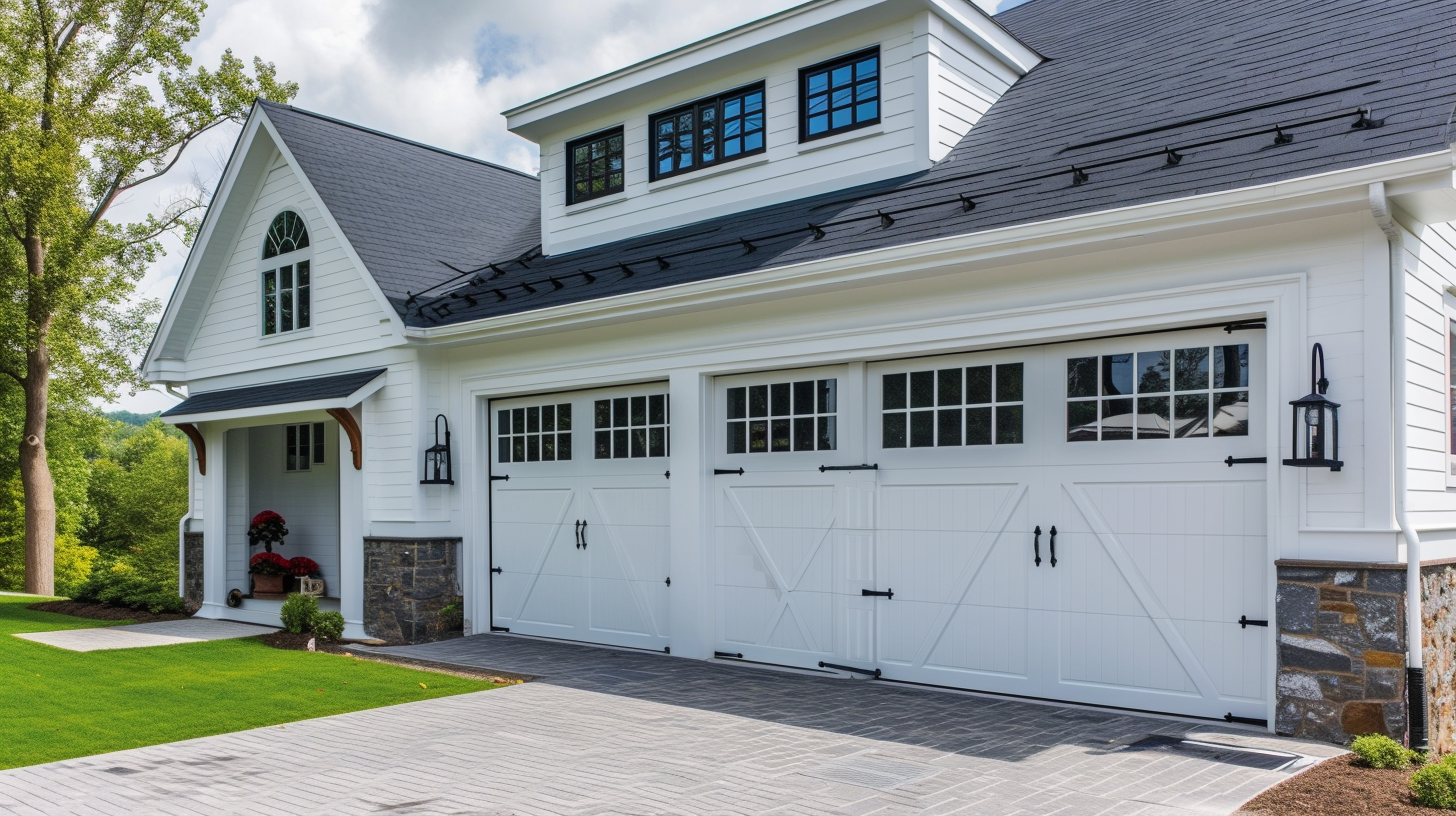Installing a garage door opener can enhance convenience and security in any home. This article provides a step-by-step guide on how to properly install a garage door opener. From assessing your garage door to testing and adjusting the opener, this comprehensive tutorial ensures a smooth installation process. By following these instructions and using the necessary tools and materials, you can successfully install a garage door opener and enjoy the benefits it brings.
Assessing Your Garage Door
Before installing a garage door opener, it is crucial to thoroughly assess the condition and functionality of your garage door. Start by measuring the dimensions of your garage door to ensure compatibility with the opener. This step is essential as it helps determine the appropriate size and type of opener required. Additionally, checking for obstructions is vital to ensure smooth operation of the door. Look for any objects or debris that may be blocking the path of the door, such as loose cables, hanging items, or damaged tracks. Addressing these obstructions beforehand will prevent any potential accidents or damage to the opener. By assessing your garage door and taking these necessary precautions, you can ensure a successful installation of the garage door opener.
Gathering the Necessary Tools and Materials
In order to successfully install a garage door opener, it is important to gather all the required tools and materials, such as a power drill, wrenches, screws, and the opener unit itself. Selecting the right garage door opener is crucial for a smooth installation process. Consider factors such as the weight and size of your garage door, as well as the desired features and security options. Safety precautions during installation should not be overlooked. Ensure that the power to the garage is turned off before beginning the installation. Use caution while handling the power tools and sharp objects. It is recommended to have a second person assist during the installation process to ensure safety and efficiency. Following these guidelines will help ensure a successful and safe installation of your garage door opener.
Preparing the Garage Door for Installation
Once you have gathered all the necessary tools and materials, carefully inspect the garage door to ensure it is in proper condition for installation. Before installing a garage door opener, it is essential to assess the garage door measurements and weight distribution. Start by measuring the height and width of the garage door to ensure the opener is compatible. Additionally, assess the weight distribution of the door to determine if any adjustments are necessary for smooth operation. Uneven weight distribution can cause strain on the opener and lead to premature wear and tear. If needed, consult the manufacturer’s guidelines or seek professional assistance to make any necessary adjustments. Properly preparing the garage door for installation ensures a seamless and efficient operation of the opener.
Installing the Garage Door Opener Rail
To ensure a secure and stable installation, it is crucial to carefully align the garage door opener rail with the designated mounting brackets. Proper alignment is essential for the smooth operation of the garage door opener. Begin by installing the motor unit onto the ceiling, making sure it is centered and securely fastened. Then, attach the rail to the motor unit, ensuring it is level and straight. Secure the garage door opener rail to the ceiling and the wall using the provided brackets and screws. It is important to follow the manufacturer’s instructions and recommended guidelines for the specific model of the garage door opener being installed. Taking the time to properly align and secure the rail will help prevent any issues or malfunctions with the garage door opener in the future.
Connecting the Opener to the Garage Door
Regularly inspect and maintain the connection between the garage door opener and the garage door to ensure proper functionality and minimize the risk of malfunctions. Troubleshooting common connectivity issues is essential for a smooth operation of your garage door opener. If you are experiencing problems with the connection, check the wiring and make sure they are securely connected. Additionally, ensure that there are no obstructions or interference that may interfere with the signal transmission. It is also crucial to choose the right type of opener for your garage door. Consider factors such as the weight and size of your garage door, as well as the level of noise you are comfortable with. By selecting the appropriate opener, you can enhance the performance and longevity of your garage door system.
Wiring and Electrical Connections
In order to ensure reliable functionality, it is important to frequently and meticulously inspect and maintain the wiring and electrical connections in your garage door opener system. Troubleshooting common issues with the wiring and electrical connections can help identify and resolve any potential problems that may arise. One common issue is loose or frayed wiring, which can lead to power interruptions or even electrical fires. It is important to regularly check for any loose or damaged wires and replace them as needed. Additionally, safety precautions should be taken during the installation process to prevent any accidents or injuries. This includes ensuring that all electrical connections are properly grounded and following the manufacturer’s instructions carefully. By regularly inspecting and maintaining the wiring and electrical connections, you can ensure the safe and reliable operation of your garage door opener system.
Testing and Adjusting the Garage Door Opener
In order to ensure proper functionality, it is crucial to regularly test and adjust the garage door opener, ensuring smooth and efficient operation. Testing procedures play a vital role in identifying any issues and ensuring the opener is functioning correctly. One common testing procedure is to check the opener’s sensitivity settings by placing a small object, such as a roll of paper towels, in the door’s path. If the door does not reverse upon contact, the sensitivity settings may need adjustment. Additionally, troubleshooting tips can help identify and resolve any operational problems. These tips may include checking the batteries in the remote control, examining the safety sensors for dirt or misalignment, and lubricating the moving parts of the opener. Regular testing and maintenance are essential to keep the garage door opener in optimal working condition.




